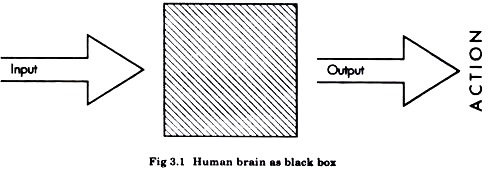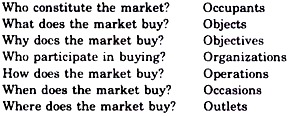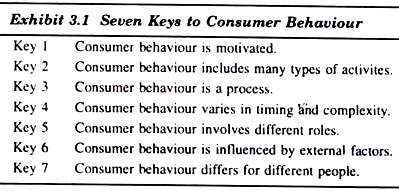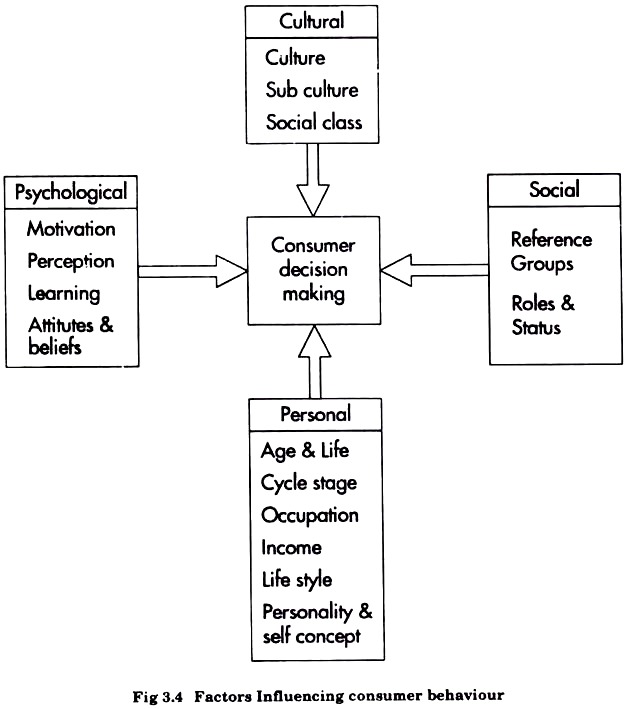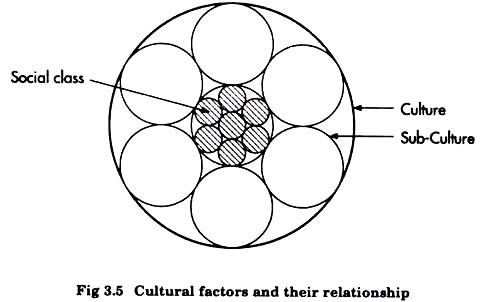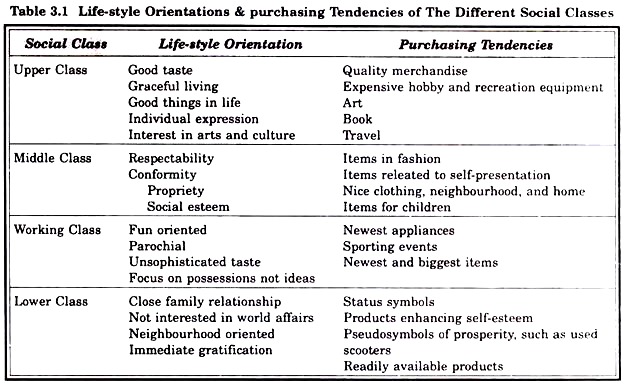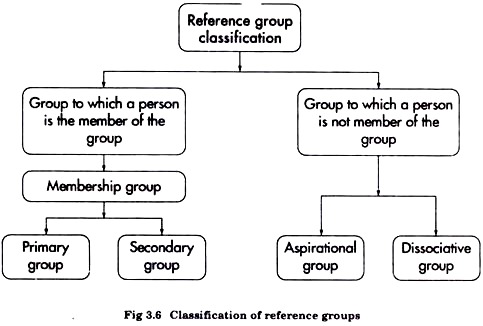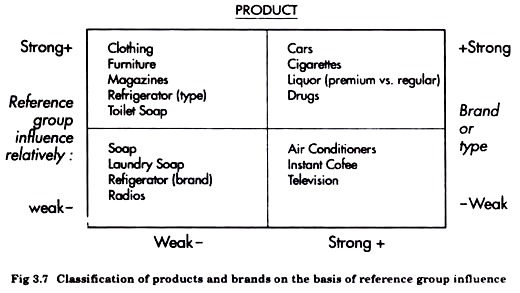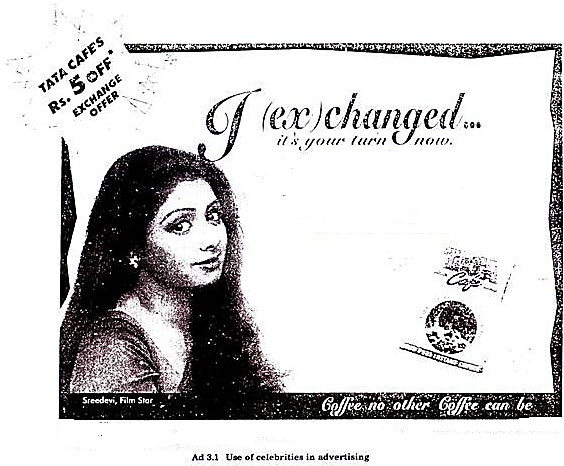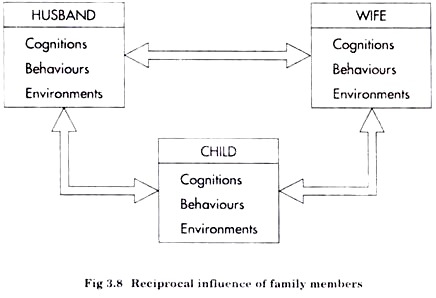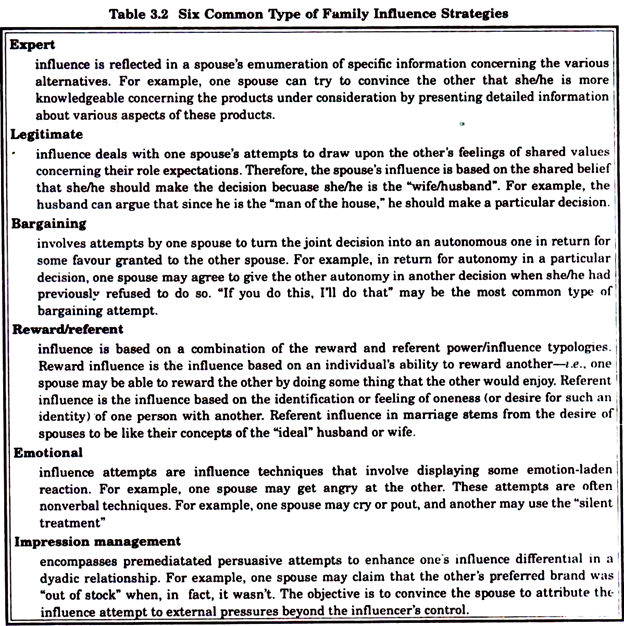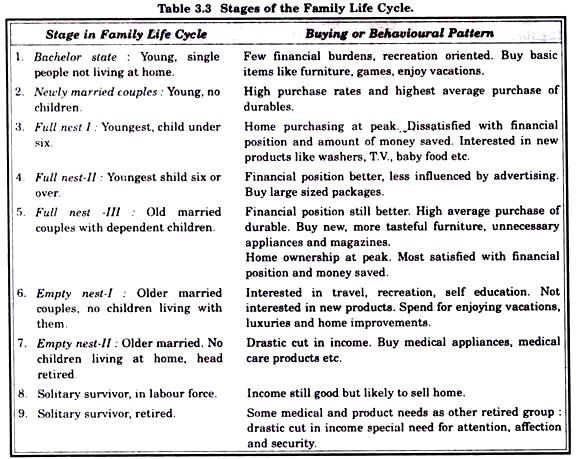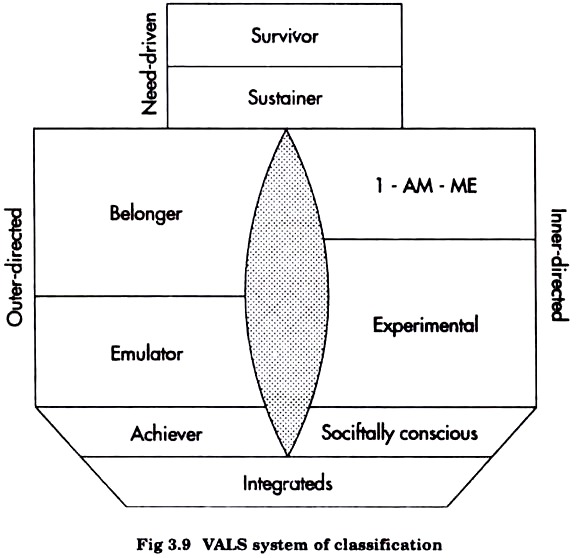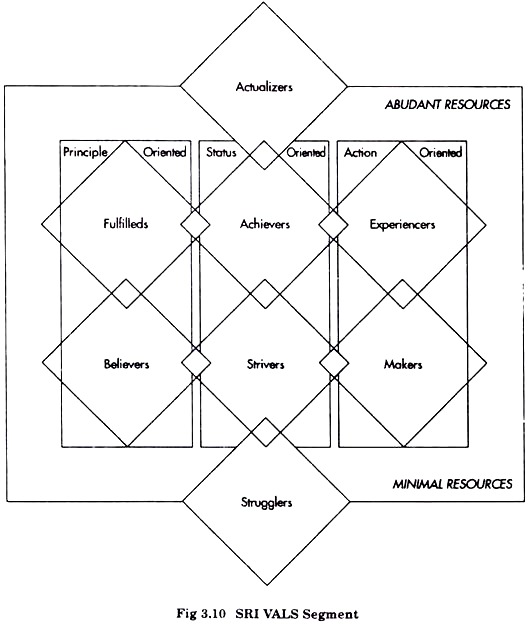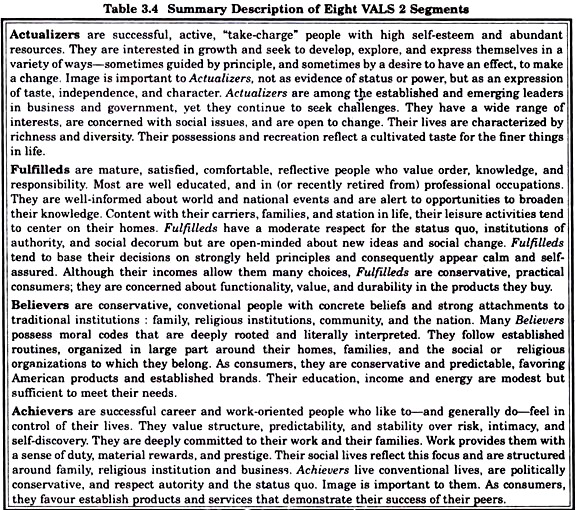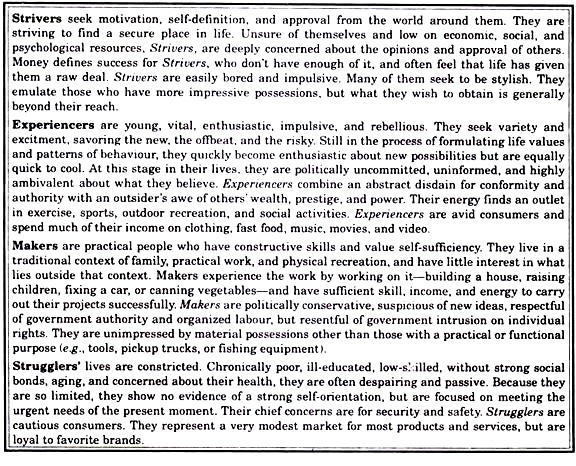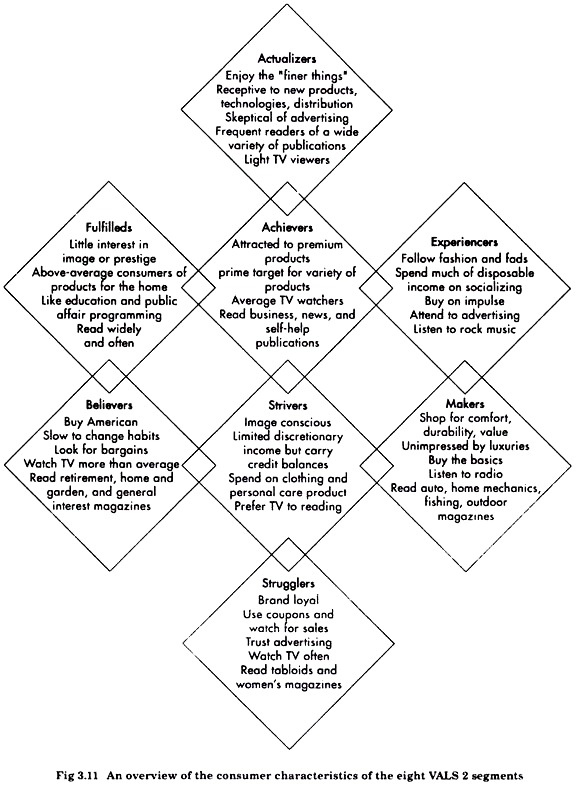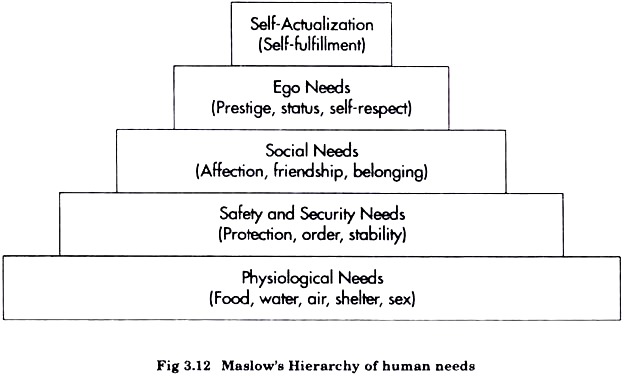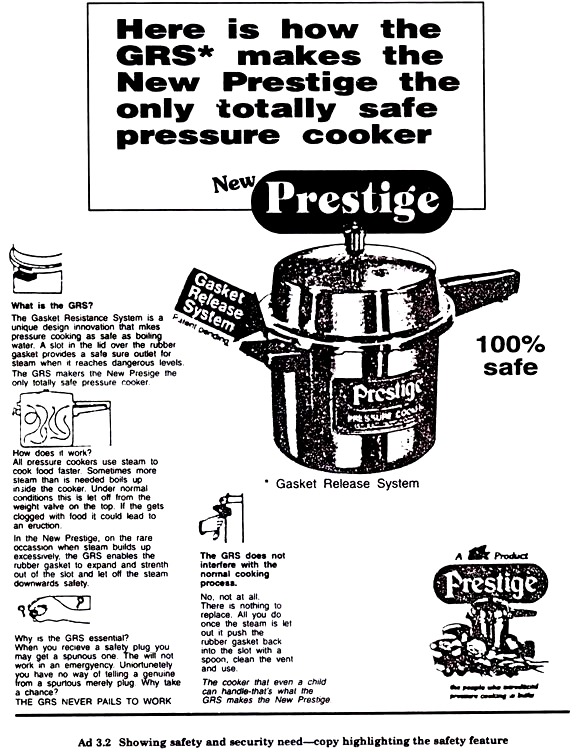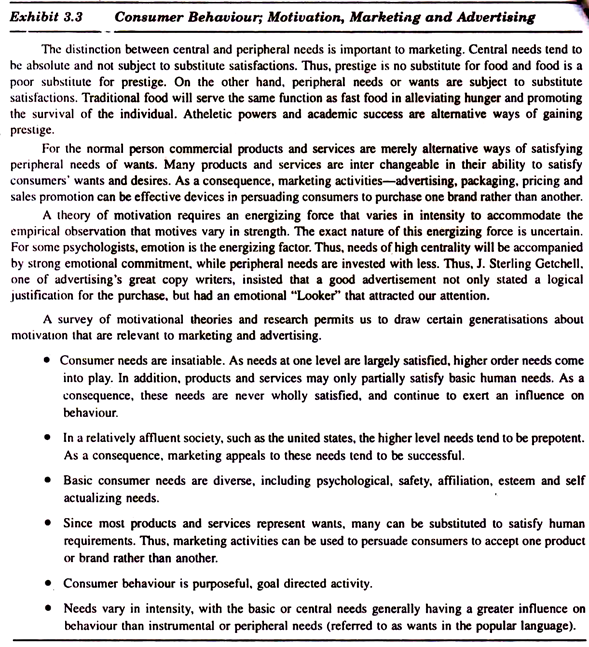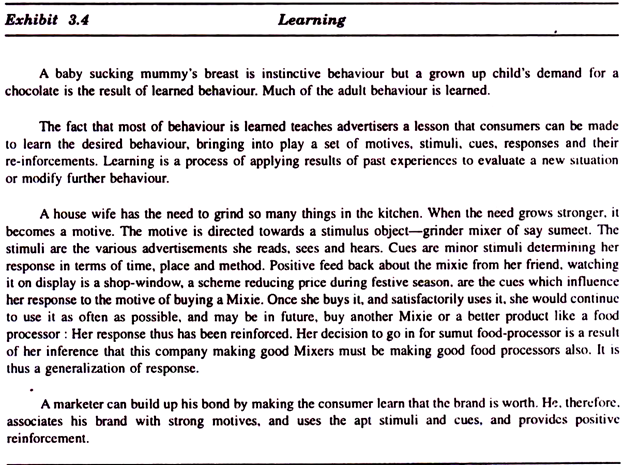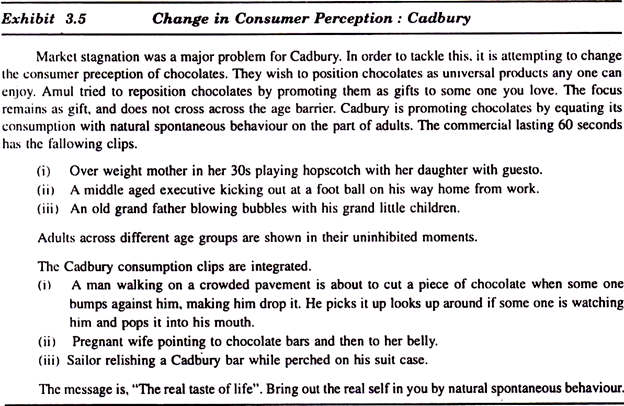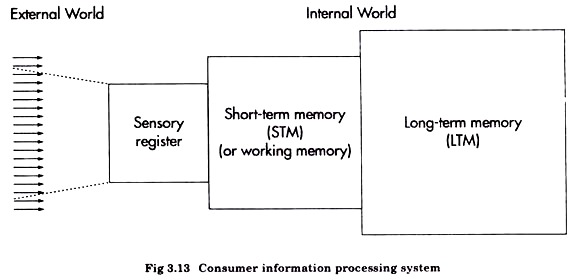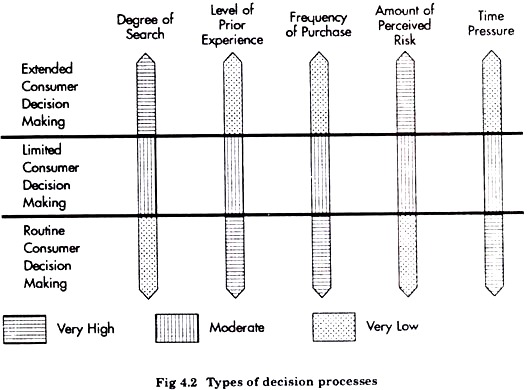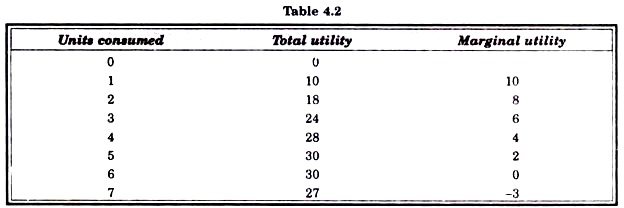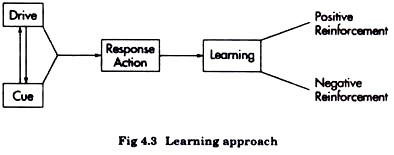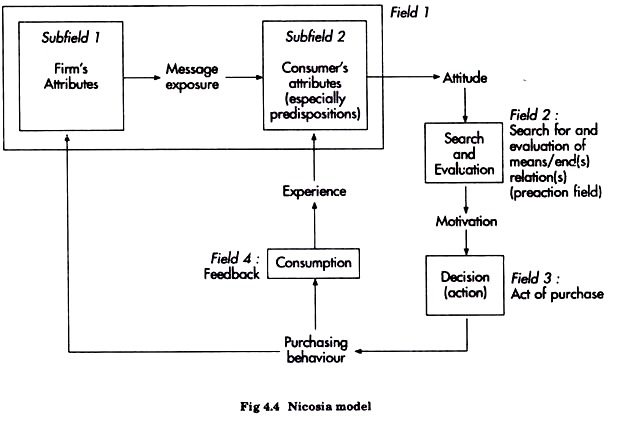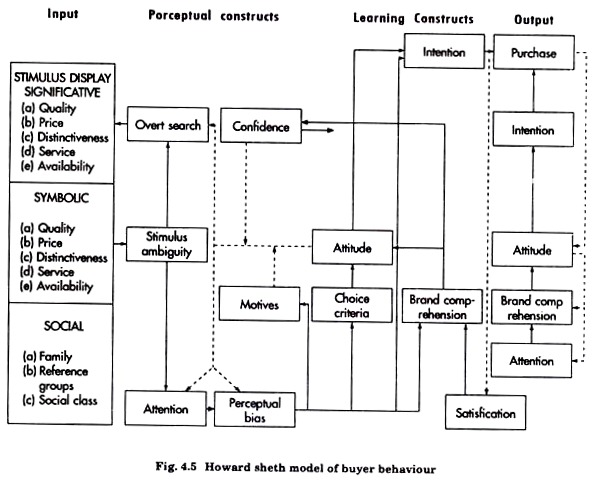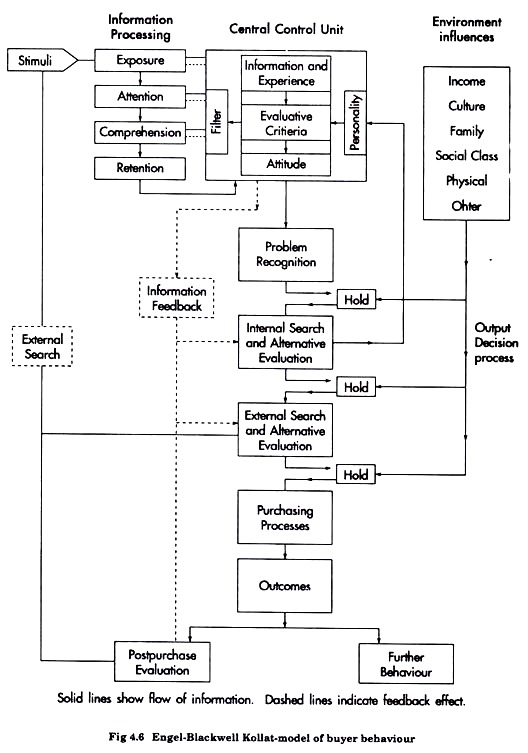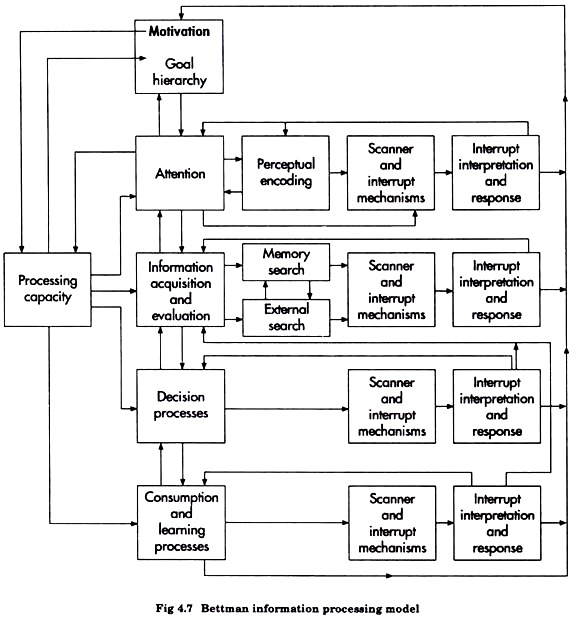A project report on consumer behaviour. This report will also help you to learn about:- 1. Introduction to Consumer Behaviour 2. Psychology of Consumers 3. Factors Influencing Consumer Behaviour 4. Family Role Structure and Buying Behaviour/Buying Roles 5. Types of Buying Behaviour 6. Types of Decision Process 7. Theories of Consumer Behaviour 8. Models of Consumer Behaviour.
Contents:
- Project Report on the Introduction to Consumer Behaviour
- Project Report on the Psychology of Consumers
- Project Report on the Factors Influencing Consumer Behaviour
- Project Report on the Family Role Structure and Buying Behaviour/Buying Roles
- Project Report on the Types of Buying Behaviour
- Project Report on the Types of Decision Process
- Project Report on the Theories of Consumer Behaviour
- Project Report on the Models of Consumer Behaviour
Project Report # 1. Introduction to Consumer Behaviour:
Marketing concept start with the consumer needs and in behaviour in meeting these needs. Every action of a person in based on needs. The real problem is to learn what a customer takes into consideration when he chooses a particular brand. Such a study is concerned with consumer behaviour.
Consumer/ buyer behaviour is that subset of human behaviour that is concerned with decisions and acts of individuals in purchasing and using products. Consumer behaviour is a subset of customers behaviour, is concerned with decisions that lead up to the act of purchase.
Consumer behaviour refers to the behaviour that consumers display in searching for purchasing, using evaluating and disposing of products and services that they expect will satisfy their needs. The study of consumer behaviour is the study of how individuals make decisions to spend their available resources (time, money, effort) on consumption related items.
It includes the study of what they buy, why they buy it, when they buy it, where they buy it, how often they buy it, and how often they use it? Take the simple product-tooth paste.
What types of tooth paste do consumers buy (gel, regular striped); what brand (national brand, private brand, generic); why do they buy it (to prevent cavities, to remove stains, to brighten or whiten teeth, as a mouth wash, to attract romance); where do they buy it (super market, drug stores, convenience stores); how often do they use it (when they wake up, after each meal, when they go to bed, or any combination thereof); how often do they buy it (weekly, bi weekly, monthly)? Or consider a more durable product.
The fax machine. What kinds of consumers buy fax machines for home use? What features do they look for? What benefits do they seek? What types of documents do they fax? For what reasons? How likely are they to replace their old model when new models with added features become available?
The answers to these questions can be found through consumer research, and provide fax manufacturers with important input for product scheduling, design modification and promotional strategy.
A human being by nature is very complex. It is very difficult to understand the human behaviour. It is the human brain which directs all the activities of a human being. It is said that human brain is like a black box. It is very difficult to see it. As shown in the Fig. 3.1 that we can see input and output but not the real mechanism how the inputs are transformed into the output.
In simple way we can say that the behaviour is the response of a stimuli. The usual stimulus is the need for which there is action called response. Consumer behaviour can be defined as “the activities and the actions of people and organisation that purchase and use economic goods and services, including the influence on these activities and actions”. J. F. ENGELS
In other words it can be said that “consumer behaviour refers to all the psychological ,psychological and socio psychological reasons of individual consumers respond to marketing.’’
The study of consumer behaviour attempts to find the answer for the following questions:
These are also called as 70’s of consumer behaviour.
For the marketer that person is important who makes the buying decision, not the one who actually makes the purchase or uses the product. Understanding this person helps marketers to develop marketing mixes and predict how targeted customers will respond to them.
Project Report # 2. Psychology of Consumers:
For making a successful marketing program it is necessary for a marketer to study the consumer behaviour so that he would know the attitudes, intentions, desires of the customer.
Customer psychology has the following components:
1. Knowledge:
Knowledge is one type of information and on the basis of the knowledge the psychology of customer develops. For giving knowledge of the product to the customers, promotion plays an important role.
2. Attitude:
Attitude is a state of mind or feeling. It induces a predisposition to behave in some way. Attitudes are very important in explaining buyer behaviour.
3. Intention:
Intention means desires to do something. After knowing the intention of customers, the marketing programme can be formulated and can be coordinated with the production.
4. Motive:
It is the integral state, which directs the behaviour of a person. Some people call it urge. Because of the urge, the person’s behaviour is directed towards a particular cause.
Project Report # 3. Factors Influencing Consumer Behaviour:
A consumer take different types of decision. In order to understand the consumer the marketer must make extensive use of social sciences including psychology, sociology, economics and anthropology. Fig. 3.4 presents the major influences on consumer buying decisions.
There are intra personal, inter personal and many other environmental variables that affects consumers decision making process. The inter personal influences include family, social class, reference group, cultural and financial status of an individual. The intra personal variable include motivation, perception, learning, attitudes and personality of the buyer.
1. Cultural Factors:
(a) Culture:
Culture is an important determinant of human behaviour in the society. Culture refers to “people’s shared, customs, beliefs, values and artifacts, (housing, works of art and so on) that are transmitted from generation to generation”
The study of culture is necessary to understand the human behaviour. It refers to the study of acquired or cultivated behaviour. The study of culture helps the marketer in his efforts to study the non-rational aspect of consumer behaviour.
The basic characteristics of a culture are as follows:
1. The culture is inculcated into an individual and passed on from generation to generation.
2. The customer lives in a society having certain cultural characteristics though the customer has to learn everything from his experience but culture provides certain patterns of behaviour to be adopted.
3. Cultural values keep on changing through the passage of time.
4. Culture meets different type of needs of an individual in society and if its elements do not conform to the individual they extinguish.
5. The cultural values are shared by the society as a whole.
(b) Sub Culture:
Each culture consists of smaller sub cultures that provide more specific identification and socialisation for its members. Sub cultures include nationality, racial groups and geographical regions. Many sub cultures make up important market segments and marketers often design product and marketing programmes tailored their needs. They influence food preferences, clothing choices, recreation etc.
(c) Social Class:
It is identified as relatively permanent and homogeneous group of people having certain identifiable characteristics. According to P. Kotler, social classes are relatively homogeneous and enduring divisions in a society, which are hierarchically ordered and whose members share similar values, interests and behaviour.
The marketer has to study the behavioural patterns of these classes so as to formulate his marketing strategy and promotional communication.
Social classes have the following characteristics:
(a) Persons of two different social classes tend to behave differently.
(b) Persons are perceived as occupying inferior or superior positions according to their social class.
(c) A person’s social class is indicated by a number of variables as occupation, income, wealth, education rather than by any single variable.
(d) Individuals can move from one social class to another up or down, during his life time.
2. Social Factors:
(a) Reference Groups:
Reference group is a relatively small social group to which a person belongs or aspires to belong and that provide guides to acceptable beliefs, values, attitudes and behaviour. According to Philip Kotler, “a person’s reference groups consist of all the groups that have a direct (face to face) or indirect influence on the person’s attitudes or behaviour.” Reference groups are of different types (Fig. 3.6).
Membership groups have the direct influence on a person. These are groups to which the person belongs and interacts.
Primary groups are those with which the person interact fairly continuously as family friends, Neighbours, Co-workers. These groups are informal.
Secondary groups tend to be formal and have less continuous inter action Include religious, professional and trade union groups.
Aspirational groups to which a person is not the member but would like to be associated to that group as everyone want to be the part of the group to which celebrities belong.
Dissociative Group a group whose values or behaviour an individual rejects.
People are significantly influenced by their reference groups in at least 3 ways:
(1) Reference groups expose an individual to new behaviour and life style.
(2) They influences the person’s attitudes and self-concept because the person normally desires to ‘fit in’.
(3) Reference group create pressures for conformity that may affect the persons actual product and brand choices.
The influence of reference group can be understood by the marketer’s use of celebrities to promote their products. The logic behind using the celebrities is that the customer would like to be that celebrity after using the product or the celebrity work as a endorser People want to be the member of that class to which the celebrity belong.
As the Hindustan lever uses film personalities for advertising their soap brand Lux. Reason for using film personalities sports persons or other celebrated authorities is that for the target customers these celebrities are the part of aspirational group and the target customer would like to be the member of that elite group by using the endorsed product.
Ad 3.1, shows the use of celebrities by the marketers for different kinds of products as they have great persuation power.
(b) Family:
The family is considered as one of the strongest sources of group influence for the individual consumer. The joint family is the most common form of family system in India From the marketer point of view the decision making role in the joint family system is being played by the oldest member of the family.
It is not always that the authority vests with him but it can be diffused also. The marketer must know income of the family as a whole that are being used for family purchases.
Family of Orientation:
From parents a person acquires an orientation towards religion, politics, self-worth etc. In countries where parents live with their grown children, their influence can be substantial.
Family of Procreation:
Marketers are interested in the roles and relative influence of the husband, wife and children in the purchase of a large variety of products and services.
In case of expensive products and services husband and wives engage in more joint decision making.
Husband Dominant- Life insurance, automobiles, TV.
Wife Dominant- Washing machine, kitchenware, furniture.
Equal -Vacation, housing, outside entertainment.
(c) Roles and Status:
A person participates in many groups throughout the life. The person’s position in each group can be defined in terms of roles and status. A role consist of activities that a person is expected to perform according to the persons around him. Each role carries a status. A manager has more status than a salesmen. Marketers are aware of status symbol potential of products and brands.
However, status symbol varies for social classes and also geographically. On the basis of roles and status marketers target their products. For example Raymond’s suiting’s are directed towards executives and other high income group families having a distinct status. Surf Excel and Aerial is directed towards the housewives having different status than the women using other detergents.
3. Personal Factors:
Include age and life cycle stage, occupation, economic circumstances, life style and personality and self-concept.
(a) Age and Life Cycle Stage:
People buy different goods and services over their life time. Consumption is also shaped by the stage of the family life cycle. There are nine stages of the family life cycle (Table 3.4) and in these stages the person behaves in a different way.
(b) Occupation:
A person’s buying behavioural pattern is also influenced by his occupation. For example, a company president will buy expensive suits, credit card membership etc. The marketer turns to find out the different occupational group of the segment and draft the plan accordingly.
For example Raymond’s promote its exclusive suiting’s for middle level and higher level executives, Zodiac has ties for executives. Recently VIP has launched socks exclusively for executives.
(c) Economic Determinants:
Economic considerations are very powerful and influence-able as far as the behaviour is concerned. Marshall was the first person to examine the role of economic factor on human Behaviour. The human being want to maximize his satisfaction by his limited resources.
Before taking any decision, a consumer collects various information’s. Economic model is based on the assumption that the price of the product affect its demand. The important economic factor is income and liquid assets.
Consumer behaviour always involves choice. The economic factors that determine consumer behaviour are:
1. Personal income
2. Family income
3. Income expectations
4. Consumer liquid assets
5. Consumer credit
6. Established living standards
Income is the most powerful economic factor to influence consumer behaviour because it gives him purchasing power. From the marketer’s point of view, here the disposable income is important than the gross income.
Disposable income is that part of a person income which remains after deduction because of state taxes and repayment at debt etc. Out of the disposable income, a major share is spent to meet the basic needs like food, shelter, education etc.
The remaining income after it is called as discretionary income. With reference to Indian consumers, it is not his personal income that decides his buying power but the income of the family as a whole has a great influence on his buying behaviour.
1. Personal Income:
Personal income is by far the most powerful economic factor.
Disposable personal income (DPI)
DPI = Gross income – Pre-emptive demand
Pre-emptive demand include the money spend which has to be spend any way as payment of taxes, repayment of debt etc.
When DPI declines, consumer reduce spendings
when DPI increases, consumers buy more of luxury items.
“As a rule and on average, the men are disposed to increase their consumption as their income increases, but not as much as the increase to their income”.
(A) Angel’s Law of Consumption:
When income increases:
(i) Proportion spent on food declines
(ii)Proportion spent on housing and house hold remains constant.
(iii) Proportion spent on clothing, education, Health etc. Increases.
(B) Discretionary Income:
DI = DPI – Amount spent on basic needs Increase in Discretionary income implies rise in entire life style of consumer.
2. Family Income:
Relationship Between the family size/requirements and the family Income determines the buying behaviour of family members.
3. Income Expectation of Consumer:
4. Consumer Liquid Assets:
e.g., Bank Balance, short term bank deposit, shares, Govt. bonds etc.
Liquid Assets are used to buy consumer durable like automobile, refrigerator etc.
5. Consumer Credit:
e.g., (i) Allwyn Refrigerators and Western TV are sold on an instalment base,
(ii) Cellular Phones are provided on Instalment basis.
6. Established Living Standards:
According to Dusenbery (U.S.A.)
A consumer is not only influence by his current income but also by the living standard employed in past:
1. Experimental (7%) are people who persue a rich inner life and want to experience directly what life has to offer.
2. Societally conscious (90%) people have high sense of social responsibility and want to improve conditions in society.
3. Integrated (2%) are people who have fully matured psychologically and combine the best elements of inner directedness and outer directedness.
The classification is based on the idea that individuals pass through a number of developmental stages, with each stage affecting the person’s attitudes, behaviour and psychological needs.
People pass from a need driven stage (survivors and sustainers) into either an outer directed hierarchy of stages (belongers, emulators, and achievers) or an inner directed hierarchy of stages, (I am me, experiential, societally conscious) with a few reaching an integrated stage.
Marketers pay little attention to need driven segments of the population because they lack economic resources. The other groups are of greater interest and have distinct demographic, occupational and media characteristics. Thus, a manufacturer of expensive luggage will want to know more about the characteristics of achievers and how to advertise to them.
(a) Life Style:
People coming from same sub culture, social class and occupation may lead quite different life styles. A person’s life style is the person’s pattern of living in the world as expressed in the person’s activities, interests and opinions.
Life style portrays the person’s interaction with the environment. Life style show a person’s way of being and acting in the world. Marketer will search for relationships between their products and life style group. The Stanford Research Institute’s values and life styles (VALS) programme classifies the American public into nine value lifestyle groups based on analysing the answers of 2713 respondents to over 800 questions.
These nine groups are:
1. Survivors (4%) are disadvantaged people who tend to be “despairing, depressed, with drawn”.
2. Sustainers (7%) are disadvantaged people who are voluntarily struggling to get out of poverty.
3. Belongers (33%) are people who are conventional, conservative, nostalgic, and un-experimental, and who would rather fit in than stand out.
4. Emulators (10%) are ambitious, upwardly mobile, and status conscious; they want to make it big.
5. Achievers (23%) are the nation’s leaders, who make things happen, work within the system, and enjoy the good life.
6. “I am me” (5%) are people who are typically young, self engrossed, and given to whim.
7. Experimentals (7%) are people who pursue a rich inner life and want to experience directly what’s life has to offer
8. Societally conscious (9%) people have a high sense of social responsibility and want to improve conditions in society
9. Integrateds (2%) are people who are fully matured psychologically and combine the best elements of inner directedness and outer directedness.
Stanford Research Institute now revised the VALS programme and given 3 general consumer groups and then subdivided these major categories into a total of eight distinctive subgroups or segments (Fig. 3.10)
Group 1 Principle Oriented Consumers:
Whose choices are motivated by their beliefs rather than by desires for approval.
Group 2 Status Oriented Consumers:
Whose choices are guided by action, approvals and opinions of others.
Group 3 Action Oriented Consumers:
Who are motivated by a derive for social or physical activity, variety and risk taking. Each of these major self orientations has distinct attitudes, life styles and decision making styles.
The characteristics of the 8 sub groups are elaborated and below in Table 3.4 & Fig. 3.11:
(e) Personality and Self Concept:
Each person has a distinct personality that will influence his behaviour. According to Philip Kolter, Personality means the person’s distinguishing psychological characteristics that lead to relatively consistent and enduring responses to his or her environment.” Personality is usually describe in terms of traits like self confidence, dominance, defensiveness, adaptability etc.
It is generally agreed that personality traits do influence consumers’ perceptions and buying behaviour. However, there is considerable disagreement as to the nature of this relationship- that is how personality influences behaviour.
Although we know that people’s personalities often are reflected in the clothes they wear, the car they drive and the restaurants they eat in. It is very difficult to predict-the behaviour from particular personality trait.
The reason is simple: Many things besides personality enter into the consumer buying decision process. Many marketers use a concept related to personality a person’s self concept or self image Marketers should try to develop brand image that match the self image of the target market.
4. Psychological Factors:
Include motivation, perception, learning attitudes and beliefs.
(a) Motivation:
Motivation is a internal urge to do something. Why a person acts at all? The answer can be given by understanding those forces which affect these actions. A person acts because he wants to fulfill his needs. All the acts of a person are based on his desire to fulfill the needs and the need is the rationality of each and every action.
The psychological, social and other needs motivate the customer. Abraham Maslow has presented the hierarchy of human needs to explain the behaviour of the individual. Need is a recognised want and leads the buyer to act and satisfy it.
Only unsatisfied needs result in action. Maslow in his five level hierarchy has explained his theory. He explained that it lower level needs are satisfied, the consumer aspires for the satisfaction of higher level needs. Buying motives are the reasons why the consumer buys a product and the marketing manager is interested to know these motives.
Hierarchy of Needs by Abraham Maslow:
Dr. Abraham Maslow, a clinical psychologist formulated a widely accepted theory of human motivation based on the notion of a universal hierarchy of human needs.
Maslow theory postulates five basic levels of human needs, which rank in order of importance from lower level (Biogenic or physiological) needs to higher level (psychogenic or psychological) needs suggested that individuals seeks to satisfy lower level needs before higher level needs emerge.
The lowest level of chronically unsatisfied need that an individual experiences serves to motivate his behaviour. When that need is fairly well satisfied, a new (and higher) need emerges that the individual is motivated to fulfill. When this need is satisfied a new (and still higher) need emerges, and so on.
Fig. 3.12 presents the Maslow’s hierarchy of needs. According to the theory there is some overlap between each level as no need in ever completely satisfied. For this reason, though all levels of need below the dominant level continue to motivate behaviour to some extent, the prime motivator—the major driving force within the individual—is the lowest level of need that remains largely unsatisfied.
Physiological Needs:
According to Maslow, the first and the most basic level of needs is physiological. These needs are required to sustain biological life include food, water, air, shelter, clothing, sex: All the biogenic needs are the primary needs. According to Maslow, physiological needs are dominant when they are chronically unsatisfied.
For a man who is extremely hungry, no other interest exist but food. He dream food, he remembers food, he thinks about food, he perceives only food and he wants only food. For many citizens of our country biogenic needs are not fulfilled and they always strives for fulfilling their basic needs.
So these people can be motivated by those factors which can give them food. For those persons whose Biogenic needs are satisfied (for example upper middle level and upper level managers) they strive for esteem and self-actualization needs.
Safety Needs:
After the first level of needs are satisfied, safety and security needs become the driving force behind an individual’s behaviour. These needs are concerned with much more than physical safety.
They include order, stability, routine familiarity, control over one’s life and environment, and certainty—the knowledge for example, that the individual will eat dinner not only that day and the following day, but also every day far into the future. Health is also a safety concern (Ad 3.2).
Social Needs:
This level of hierarchy includes such needs as love, affection, belongingness and acceptance. People seek warm and satisfying human relationships with other people and are motivated by love for their families. Because of the importance of social motives in our society, advertisers of personal care products often emphasize this appeal in their advertisements (Ad 3.3).
Esteem or Egoistic Needs:
When the social needs are more or less satisfied, the fourth level need becomes operative. These needs can take either an inward or an outward orientation or both.
Inwardly directed ego needs reflect an individuals need for self-acceptance, for self-esteem, for success, for independence, for personal satisfaction with a job well done, outwardly directed ego needs include the needs for prestige, for reputation, for status, for recognition from others.
Self-Actualization Needs:
According to Maslow, most people do not satisfy their ego needs sufficiently to ever more to fifth level. The need for self-actualization. This need refers to an individual’s desire to fulfill his potential to become everything he is capable of becoming. According and Maslow, what a man can be, he must be.
In summary, the hierarchy of needs theory postulates a five level hierarchy of pre-potent human needs. Higher order needs become the driving force behind human behaviour as lower level needs are satisfied. The theory says, in effect, that dissatisfaction, not satisfaction, motive behaviour.
(b) Learning:
Learning is the change in an individual’s behaviour arising from previous experience and behaviour. It is the result of reasoning, thinking, information processing and perception. Most of the human responses are based on learning i.e., self-learning or the learning of the group and most human behaviour is learned. Person’s learning is produced through the interplay of drives, stimuli, cues, responses and reinforcement.
A drive is a strong internal stimulus impelling action. A drive becomes Motive when it is directed towards a particular drive reducing stimulus object.
A cue are minor stimuli (object) that determine when, where and how the person responds.
Response A action
Reinforcement if experience is rewarding, the response will be reinforced.
(c) Perception:
Perception is the meaning which a person gives to a stimuli. Perception influences and shapes the behaviour. It can be defined as a complex process by which people select, organize and interpret sensory stimulation into a meaningful and coherent picture. The marketer must know how a customer perceives a product as a whole, its features, its packaging, its price etc., and then formulate the broad plans.
A motivated person is ready to act. Act of motivated person is influenced by his perception of the situation. Perception not only depends upon physical stimuli but also the stimuli in relation to the surrounding field and conditions within the individual.
People can emerge with different perceptions of the same object because of three perceptual processes:
(a) Selective attention
(b) Selective distortion
(c) Selective retention
(a) Selective Attention:
People are exposed to a huge amount of daily stimuli in the form of advertisement but a person cannot possibly give attention to all the advertisements. Most of the advertisements (stimuli) are screened out. A people will kind to perceive only that stimuli (ad of the product) which he needs or which have unique selling preposition.
People would like to notice the following types of stimuli:
(i) People are more likely to notice stimuli that relate to the current need.
(ii) People are more likely to notice stimuli that they anticipate.
(iii) People are more likely to notice stimuli whose deviations are large in relation to the normal size of stimuli. Ads that are larger in size or that use four colours or are novel and provide contrast are more likely to be noticed.
(b) Selective Distortion:
It describes the tendency of people to twist information into personal meaning. People interpret information in a way that will support rather than challenge their preconceptions.
(c) Selective Retention:
People tend to retain information that supports their attitudes and beliefs (selective retention). Because of these perceptual factors (selective attention, selective distortion, selective retention) Marketers use drama and repetition in sending messages to their target market.
Subliminal Perception:
Advertisers know consumers use selective perception to filter out irrelevant or unwanted advertising messages, so they employ various creative tactics to get their messages noticed. One controversial tactic advertisers have been accused of using is appealing to consumer’s sub-consciousness.
Subliminal perception refers to the ability to perceive a stimulus that is below the level of conscious awareness. Psychologists generally agree that it is possible to perceive things without being consciously aware of them.
The possibility of using hidden persuaders such as subliminal audio messages or visual cues to influence consumers might be intriguing to advertisers but would not be welcomed by consumers. The idea of marketers influencing consumers at a subconscious level has strong ethical implications.
Researchers believe subliminal messages are not likely to be effective in influencing consumer behaviour. The use of subliminal techniques is not a creative tactic we would recommend to advertisers.
(d) Attitudes and Beliefs:
Attitudes are the emotional predispositions to respond positively or negatively to an object or class of objects. Predispositions are the result of constant learning influenced by the perception and personality. It is very difficult to change the perception because it is the result of continued learning.
Attitudes led people to behave in fairly consistent way toward similar objects. If a consumer is brand loyal then it is very difficult to change his attitude and belief towards that brand. The marketer must try to identify the attitudes and beliefs of the customer segment and then develop the appropriate positioning strategy.
Consumer researchers assess attitudes by asking question or making inferences from behaviour. For example, if a researcher determines from questioning a consumer that the individual consistently buy close up and recommends them to friends, the researcher is likely to infer that consumer possesses a positive attitude towards close up toothpaste.
Attitudes are important to the marketer because they theoretically summarize a consumer’s evaluation of an object (brand, company) and represent positive or negative feelings and behavioural tendencies. Marketer’s keen interest in attitudes is based on the assumption that they are related to consumer’s purchase behaviour.
Advertising and other promotional methods are used to create favourable attitude toward new products/services or brands, reinforce existing favourable attitudes and/or change negative attitudes.
Multi-Attribute Attitude Model:
It is an approach to study and measuring attitude particularly relevant to advertising. It views an attitude object such as product or brand as possessing a number of attributes that provide the basis on which consumers form their attitudes. According to this model, consumers have beliefs about specific brand attributes and attach different levels of importance to these attributes.
Using this approach, an attitude toward a particular brand can be represented as:
For example, a consumer may have belief B, about various brands of toothpaste on certain attributes. Close up gel for example may be perceived as having good taste, icy breath while Pepsodent may not be perceived as having these attributes but consumers may believe that it perform well on attributes like whitening teeth, and low price.
To predict attributes one must know how much importance consumers attach to each of these attributes.
Consumer may hold a number of different beliefs about brands in any product or service category. However, not all of these beliefs are activated in forming an attitude. Beliefs concerning specific attributes or consequences that are activated and form the basis of an attitude are referred to as salient beliefs.
Marketers should identify and understand these salient beliefs. They must also recognize that the saliency of beliefs varies among different market segments over time and across different consumption situations.
Changing the Attitude:
Multi-attribute model help marketer’s understand and diagnose the under lying basis of consumer’s attitudes. By understanding the believes that underlie consumer’s evaluations of a brand and the importance of various attributes or consequences, the marketer is better able to develop communication strategies for creating, changing or reinforcing brand attitudes.
The multi-attribute model provides insight into several ways marketers can influence consumer attitudes, including:
(a) Changing consumer’s perceptions of the importance or value of an attribute.
(b) Adding a new attribute to the attitude formation process.
(c) Increasing or changing the strength or belief rating a brand on an important attribute.
(d) Changing perceptions of belief ratings for a competing brand.
Marketers can influence consumer attitudes by changing the relative importance of a particular attribute. This strategy involves getting consumers to attach more importance to the attribute in forming their attitude toward the brand. Marketers using this strategy want to increase the importance of an attribute their particular brand has.
The second strategy for influencing consumer attitudes is to add or emphasize a new attribute that consumers can use in evaluating a brand. Marketers often do this by improving their products or focusing on additional benefits associated with using the brand.
For example the act of Veeco termaric cream states that it can now be used for burns as against the previous positioning as anticipative.
Third strategy is commonly used by the advertisers. They identify an attribute or consequences that is important and remind consumers how well their brand performs on this attribute. In situations where consumers do not perceive the marketer’s brand as possessing an important attribute or the belief strength is law; advertising strategies may be targeted at changing the belief rating.
Even when belief strength is high, advertising may be used to increase the rating of a brand on important attribute.
For example Siemens is continuously increasing the belief rating by giving advertisements of clear communication (Ad 3.4).
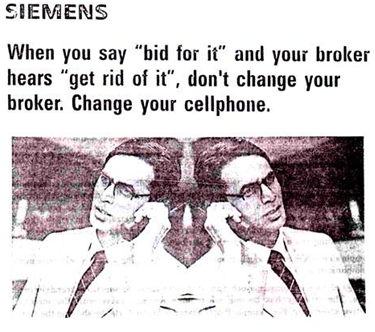 The strategy of changing consumer belief about the attributes of competitive brands or product categories. The strategy has become much more common today with the increase in comparative advertising. For example P & G advertise brand Aerial by showing the two type of cloth rug after the other detergent’s-30 washing and after the Aerial 30 washing.
The strategy of changing consumer belief about the attributes of competitive brands or product categories. The strategy has become much more common today with the increase in comparative advertising. For example P & G advertise brand Aerial by showing the two type of cloth rug after the other detergent’s-30 washing and after the Aerial 30 washing.
Project Report # 4. Family Role Structure and Buying Behaviour/Buying Roles:
Marketer must identify who makes the buying decision. The type of buying decision that is involved and steps in the buying process. For many products it is fairly easy to identify the buyer on the other hand, the decision making unit consists of more than one person.
So the marketer must realise that a set of purchase roles exists and come into play within the family. The roles can be identified and they determine how families make decisions.
People might play any one or more roles in a buying decision:
1. Initiator:
The person who first suggest or thinks of the idea of buying a particular product or service.
2. Influencer:
A person who views or advise to influence the buying decision.
3. Decider:
The person who ultimately makes a buying decision or any part of it, whether to buy, what to buy, how to buy or where to buy.
4. Buyer:
The person who makes an actual purchase.
5. User:
The person who consumes or uses a product or services.
A company needs to identify who occupies these roles because they affect product design and advertising message decisions.
For example referring to the Ad 4.1 the positioning strategy of the company is to direct the product towards the youths because they are the users.
Buying roles involves:
Initiator – Youth
Influencer – Youth
Decider – Father
Buyer – Father
User – Youth.
Here the five buying roles are played by the youth and the father.
Consider Ad 4.2 here the product is Kinetic Honda—a consumer durable which involves high involvement and the consumer behaviour is complex type. Every member in the family influence the purchase specially the child.
The buying roles can be summarized as:
Initiator – Father/child Influencer – Child
Decider – Father
Buyer – Father
User – Father (Scooter is shared by other family members also)
Project Report # 5. Types of Buying Behaviour:
Consumer decision making varies with the type of buying decision. There is a great difference in the behaviour between buying consumer durable and consumer non-durable.
Assael had identified four types of buying behaviour based on involvement and differences among brands Table 4.1:
1. Complex buying behaviour
2. Dissonance reducing buying behaviour
3. Variety seeking buying behaviour
4. Habitual buying behaviour
1. Complex Buying Behaviour:
When the customers are highly involved in the purchase and these are significant differences among brands, they show this type of behaviour. Consumers are highly involved because product is expensive, brought infrequently, risky and highly self expressive. The customer does not know much about the products and wants together a lot of information because of the significant differences among brands.
2. Dissonance Reducing Buying Behaviour:
The customer is highly involved because the product is expensive and risky. There are very little differences among brands so the customer is confused and wants to collect a lot of information. After the purchase the customer might develop dissonance because of dissatisfying features of the purchased products. So while purchasing, the customer wants to satisfy himself by collecting purchase information’s.
3. Variety Seeking Buying Behaviour:
In this type the customer shows low involvement because the product is not expensive and purchased frequently. The customer has some belief, choose a brand without much evaluation and also evaluates it during consumption.
4. Habitual Buying Behaviour:
It is shown when the customer has low involvement and absence of significant brand differences. Marketers of low involvement products with few brand differences find it effective to use price and sales promotions as an incentive to product trial, since buyers are not highly committed to any brand.
Project Report # 6. Types of Decision Process:
Each time a consumer buys a goods or services, he uses the decision process. It may be used consciously or unconsciously. The consumer may use extended, limited or routine decision making depending upon the degree of search, level of prior experience frequency of purchase, amount of perceived risk and time pressure.
1. Extended Consumer Decision Making:
Here the considerable time is spent on information search and evaluation of alternatives. Expensive, complex items with which the consumer had little or no experience require this form of decision making. Perceived risks are usually high and purchase is quite important.
Purchases are made quite infrequently. The consumer denotes a lot of time in making these purchases and delay in decision making is there. This type of decision making is usually required when choosing a college, a wedding etc.
2. Limited Consumer Decision Manning:
It is used for items purchased infrequently. The customer has previously purchased the product but the purchase is not frequent. All the considering factors are moderate. The emphasis is usually on evaluating a list of known alternatives. A second hand car, furniture’s and a vacation are examples of items falling in this category.
3. Routine Consumer Decision Making:
When the consumer buying out of habit. The consumer seeks to spend as little time as possible in shopping and often purchases the same brand. This type of decision making is used for regularly purchased items.
These goods and services are bought regularly and as a result have little or no perceived risk .They are relatively low in price. The time pressure to buy is high. Examples of items are daily newspaper, hair cut, weekly house hold items etc.
Project Report # 7. Theories of Consumer Behaviour:
To understand clearly the human action in buying role, it is necessary to study various theories of consumer behaviour. Here we are discussing the following theories to understand rationality behind the buying decision.
1. Marshallian Economic theory.
2. Learning theory.
3. Freudian Psychoanalytic theory.
1. Marshallian Economic Theory:
According to this model, buyer is a rational man and his buying decisions are totally governed by the concept of utility. It has a certain amount of purchasing power, a set of needs to be met and a set of products to choose from, he will allocate the amount over the set of products in a very rational manner with the intention of maximising the utility or benefits.
The basic principle that explains the way consumer choose a certain mix of goods and services are called as law of diminishing marginal utility. The concept was later refined by famous economist Alfred Marshall. This theory approaches consumer choice from the view point of marginal value of utility.
Marginal utility refers to the change in the total utility resulting from one unit change in the consumption of a commodity per unit of time. The basic presence of this theory is that the consumer make choices on the basis that maximizes total utility.
The theory can be explained by using the example of bread slices with the reference of the Table 4.2, suppose a person is hungry, he searches for the food and he takes the first slice The first slice would give him the greatest satisfaction.
When he consumes the second slice the marginal utility reduces because the hunger little bit pacifies. The additional satisfaction will go on declining with every successive bread slice till it reaches to zero. Any intake beyond that (from table e.g., after 6th) will only yield negative utility or disutility.
The law of diminishing marginal utility does not hold just for breads but the principle holds true for goods and services ranging from coke to automobile. The law of diminishing marginal utility does not hold just for breads but the principle holds true for goods and services ranging from toothpaste to automobiles, hotels to flying service.
Utility is considered as a measure termed until by which the consumer achieves the most satisfactory choice. The basic postulate of marginal utility approach is that the consumer makes choices on a basis that maximizes total utility. It is based on the premise that the mind of all persons work identically in similar situation.
2. Learning Theory:
According to this theory, buyer behaviour can be influenced by manipulating the drives, stimuli and responses of the buyer. The model rests on man’s ability of learning, forgetting and discriminating.
The stimulus response learning theory states that there develops a band between behaviour producing stimulus and a behavioural response (S-R). Learning refers to “a more or less permanent change in behaviour which occurs as a result of practice”.
According to stimulus response theory (Fig. 4.3) learning is dependent on drive, cue, response and reinforcement.
Drive:
Drive is any strong stimulus that initiates action. It arouses the individual and keep him prepared to respond. There are two types of drives—Primary drives and Secondary drives. Primary drives are based on innate physiological need as pain, hunger, thirst, avoidance etc. Secondary drives are based on learning and are derived from the primary motives as desire for money, fear, pride etc.
Cue:
Cue is any object in the environment perceived by the individual. For example, a person is hungry his need is activated. He search out any restaurant for fulfilling the hunger need. A restaurant is a cue. Response is an answer to a given drive or cue. In the example, his response would be to enter into the restaurant and consume.
Reinforcement means reduction in drive and cue. Positive reinforcement occurs when the individual experiences a reduction in the strength of a drive such as reduction of hunger. Each time when a person goes for pacification of drives, reinforcement is the important factor.
3. Freudian Psychoanalytic Theory:
This model describes the consumer as one who is controlled by subconscious drives. According to Winkler, man attempts to gratify his needs, frustration leads him to perfect subtle means of satisfaction and guilt or shame causes him to express some of the more basic urges from his consciousness.
The psychoanalytic approach of Freud stresses that personality is made up of three main systems of inter dependent psychological forces or logical constructs-the id, the ego and the super ego, and behaviour is a function of the interaction of these three systems:
1. The Id:
A part of one’s psyche that leads to strong drives and urges.
2. The Ego:
It is the system of forces that functions to control and redirect the id impulses so that gratification can be achieved in the real world. Thus, resolving the conflict between id and super ego. This part of one’s psyche is conscious planning centre that attempts to analyze consequences of an act and tries to reconcile with reality. Thus, it acts as equilibrating process.
3. The Super Ego:
It is the internal representative of the traditional values and ideals of the society. The function of the super ego is to inhibit the impulses of the id that are condemned by those around him. It is concerned with person’s conscious.
Thus it is highly rational part of one’s psyche that aims to give morally right direction to his activities. It throw light on the moral issues involved in an act. From the above discussion, it is clear that human behavior is very complex and it require a deep study before coming to final consumer.
Project Report # 8. Models of Consumer Behaviour:
There are many influencing factors which affects the consumer behaviour. Purchase is only one stage of consumer behaviour.
Here we are discussing the four models of consul behaviour which are as follows:
(a) Nicosia Model
(b) Howard Sheth Model
(c) Engel-Blackwell Kollat model
(d) Bettman model.
Each model is a comprehensive model although each approaches the problem of consumer decision making somewhat differently. The Nicosia model is being characterised as a communication model that begins with a firm’s communication to the consumer via advertising and culminates with consumer feed back to the firm.
The Howard Sheth model is a learning model designed to explain the brand choice of an individual faced with several choice alternatives.
The Engel Blackwell model is a psychological interaction model the focuses on the various steps of the decision process more explicitly than do the other models. The Bettman model is a step back from efforts to build comprehensive models of all consumer behaviour. Rather it is concerned with information acquisition and evaluation.
(a) Nicosia Model:
Nicosia model represents a sophisticated attempt to show the inter relationship between the firm’s marketing communications, attributes of the consumer, the consumer’s decision process and the feed back of the consumer’s response to the firm.
The model consists of four fields, the inter-relationships of which are shown in Fig. 4.4:
Field 1:
Field 1 has two subfields—the firm’s attributes (subfield 1) and the consumer’s attributes (subfield 2). An advertising message from the firm reaches to consumer’s attributes depending upon the way the message is received by the consumer, a certain attribute may develop and the becomes an input for field 2.
The field 1 represents the output of a commercial message from the firm in the form of advertising or other form of promotions. For simplification, the model explicitly assumes that the consumer has no previous experience with or knowledge of the brand.
Field 2:
It is the area of search and evaluation of the advertised product and other alternatives, if the attitude is favourable the consumer searches for the product and evaluates it in terms of other alternatives. If this process results in motivation to buy, it becomes the input for field 3.
Field 3:
It represents the act of purchase.
Field 4:
It consists of the use of purchased item and it includes three factors as.
(a) Use and storage of the product by the consumer
(b) Retention of the experience by the consumer as an influencing factor in future purchases
(c) Feed back of sales results to the firm.
The Nicosia model conceives the buying behaviour as a decision making activity. Its limitations include an inadequate understanding of the influences and inter relationships among the consumer attributes represented by subfield two and the questionable assumption that no prior consumer knowledge or experience with the product exists.
For the respective decisions that make up a major part of consumer purchases the operation of the model is ambiguous. Despite its limitations, however, the model remains the only attempt to incorporate explicitly the actions of the marketing firm within a model of consumer behaviour.
(b) Howard Sheth Model:
Howard Sheth model is one of the most objectively constructed contemporary models of consumer behaviour. It is an attempt to explain rational brand choice behaviour within the constraints of limited individual capacities and incomplete information. The model attempts to deal with both overt behaviour and internal or cognitive behaviour that cannot be directly observed.
The model distinguishes among three levels of learning (i.e., stages of decision making):
(i) Extensive problem solving
(ii) Limited problem solving
(iii) Routinized response behaviour
(i) Extensive Problem Solving:
Takes place when the consumer’s knowledge and benefits about brands are very limited or non existent, and he does not have specific brand preference. Here the consumer actively seeks information concerning a number of alternative brands.
(ii) Limited Problem Solving:
Takes place when the consumer’s knowledge and beliefs about the brands are only partially established and he is not fully able to access band differences in order to arrive at a preference. Same comparative information is sought although the decision criteria are likely to be fairly well defined.
(iii) Routinized Response Behaviour:
Occurs when the consumer’s knowledge and beliefs about the brand and its alternatives are well established and the consumer is predisposed to the purchase of one particular brand. Howard Sheth model postulate for sets of concepts that they said as constructs or variables.
These are:
(i) Inputs
(ii) Perceptual and learning construct (Hypothetical construct)
(iii) Output
(iv) Exogenous variables.
(i) Input:
Input variables are stimuli from the buyer’s environment. These include product variables—Physical brand characteristics (significative stimuli) and verbal or visual product characteristic (symbolic stimuli)—such as quality, price, distinctiveness, availability and service as well as symbolic meaning of these variables.
Symbolic stimuli are furnished by marketer in the form of product or brand information. Besides these inputs other input is social environment which include family, reference groups and social class.
(ii) Perceptual and Learning Construct (Hypothetical Constructs):
These are the internal states of the individual that process and interpret the input stimuli. These states are not observable and changes in them must be inferred from output variables .It is the central component of the model with the psychological variables that are assumed to operate when the consumer is contemplating a decision.
Perceptual Construct:
The first of the two sets of hypothetical constructs in the Howard Sheth model are those concerned with perception. These concepts pertains to the way the individual deals with information even from various sources.
The consumer receives the stimuli and interprets it. The two factors that may influence his interpretation are stimulus ambiguity and perceptual bias. Stimulus ambiguity occurs when the person is not sure of meaning of the stimulus that he has received and how it may influence his response. Perceptual bias occurs when he distorts the information he receives to fit his established needs or experiences.
Learning Construct:
The second set of hypothetical construct is more complex. Note from the Figure 4.5 that the actual purchase, the observable behaviour is related to the individual’s intention which Howard and sheth termed the buyer’s forecast as to when, where, and how he is likely to buy the brand.
Most closely related to the buyer’s intention is his attitude toward the product or brand. As it is clear from the model, attitudes affect and are affected by a number of other variables as well as being quite complex on their own.
The manner in which the consumer interprets the stimuli leads him to the stage of brand comprehension. This refers to the consumer’s understanding and overall rating of the brand. If the consumer rates it high, it leads him to have confidence in it and eventually to the purchase decision.
(iii) Output:
The purchase decision is output.
The output variables are:
(a) Attention
(b) Comprehension
(c) Attitudes
(d) Intention and
(e) Purchase behaviour.
They are the possible responses to the input stimuli that are mediated by the individual’s internal influences. After using the product, if the consumer is satisfied with it, it will reinforce his positive attitude and will increase his brand comprehension. If the consumer is dissatisfied with product, it will lead to negative attitude, low attention to product stimuli, poor brand comprehension and negative intention to purchase.
(iv) Exogenous Variables:
These variables do not properly fall within the Howard Sheth model since the model makes no attempt to explain their formation or the changes that take place within them.
These factors influence all the constructs and indirectly through these constructs the output (purchase). The exogenous variables vary from one consumer to another and include social and organizational setting, social class, culture and financial status.
The value of Howard Sheth model is that it represents a heroic attempt to identify and organize the major variables influencing consumer behaviour. It portrays the consumer as actively seeking information from the environment. Using past experience and forming generalizations as a guide to decision making.
The model is dynamic in that it reflects the complexity of consumer behaviour and makes an honest attempt to understand it. Despite its limitations, the Howard Sheth model and its subsequent variations, has provided a useful frame work for thinking about consumer behaviour.
The model has resulted in substantial research activity. It has evolved as new information has become available and represents a Nobel effort to integrate a wide range of other isolated facts and theories.
(c) Engel-Blackwell Kollat Model:
It is probably the best known contemporary models because it forms the basis for a widely used text on consumer behaviour. Like the Howard Sheth model, the Engel Blackwell Kollat model has evolved over time to capture new information and observed relationships.
The model consists of four components:
(i) The -central control unit
(ii) Information processing
(iii) Environmental influences
(iv) Decision process.
(i) The Central Control Unit:
The governing component of the model is the central control unit which is vaguely synonymous with the central nervous system. This unit is complex apparently consisting of both conscious and unconscious processes. Here the stimuli are received and retained.
The stimuli is processed and interpreted with the help of four psychological filters:
(a) Stored information and past experience serves as a internal source for composing different alternatives.
(b) Evaluative criteria which the consumer uses in judging the alternatives.
(c) Specific and general attitudes influencing the purchase decision.
(d) Personality traits which are likely to influence the customer in evaluation of alternatives.
(ii) Information Processing:
It is the means by which external stimuli are filtered by a portion of the central control unit before they are admitted to consciousness.
There are four stages in information processing:
(a) Exposure to external stimuli
(b) Attention where in external stimuli are admitted to conscious awareness.
(c) Comprehension or understanding of stimuli.
(d) Retention or storing of the information for the future reference.
(iii) Decision Process:
The process involves the five steps namely problem recognition, internal search and evaluation, external search and evaluation, purchasing process and decision outcomes.
(iv) Environmental Influences:
These include income, culture, family, social class, physical situation and others. Depending upon the specific product under consideration, these factors may have a favourable or unfavourable influence on the purchase decision.
(d) Bettman Information Processing model:
The Bettman model is a step away from the grand comprehensive model building represented by the Howard-Sheth and Engel- Blackwell models. Rather it attempts to model a smaller range of consumer behaviour- consumer information processing. The model represents how consumers obtain and use information.
The central focus of the model is the process of information acquisition and evaluation. The need for information at any given point of time is affected by the motivational state and the particular goals of the consumer.
These are, in part a function of prior information acquisition and experience as a consumer. An individual consumer’s information gathering activity is also influenced by his current processing capacity. Processing capacity is related to education, experience and intelligence, as well as more transitory factors such as the presence of distractions and time pressures.
The information gathering of a consumer is designed to provide inputs into a decision process and information obtained by the consumer may include both factual material and potential decision rules. Once sufficient information for a decision has been obtained, the consumer interrupts information processing, makes a decision, and purchases a product.
In the Bettman model there are two types of information search. Internal search activities involve the use of memory for previously shared information. External search involves active information acquisition from advertisements, other individuals, and other sources external to the individual.
Most consumer information search activities involve both types of search, but there is a tendency to rely more heavily on one type or other, depending on the amount of information available in memory and the degree of difficulty involved in external search.
Bettman’s model provides the basis for integrating a rather substantial body of literature on consumer information processing. It also offers a substantial number of fundamental propositions, or facts about how consumers obtain and use information.
These propositions are backed by a large body of research. These propositions tend to be rather simple facts involving the relationships of relatively few of the many factors that influence information processing.
These often exist several competing theoretical frame works for explaining these observed relationships. The Bettman model does not generally offer guidance concerning which of the several competing theories is most useful.
In addition, while the schematic suggests complex relationships involving feed-back loops and interactions. These are not fully specified in the model and have not been submitted to listing. Indeed it would be very difficult to test the full model at this time for the some reasons we have discussed in the context of other models.
Despites its limitations, however the Bettman model has proven quite useful both as a guide to further research on consumer information processing and to managers interested in effective communication with consumers. Like earlier models, the Bettman model will no doubt continue to evolve as new evidence is accumulated.
